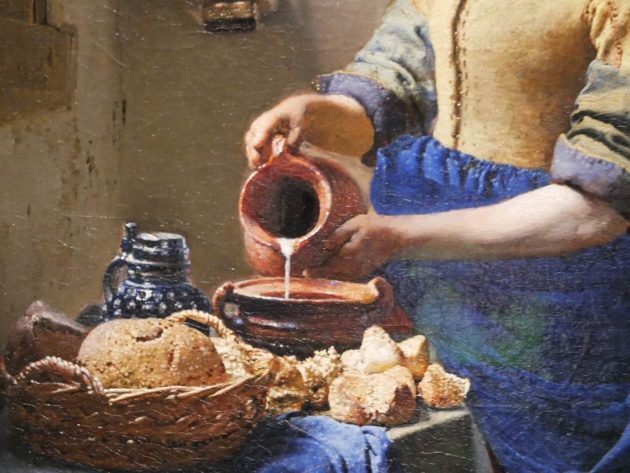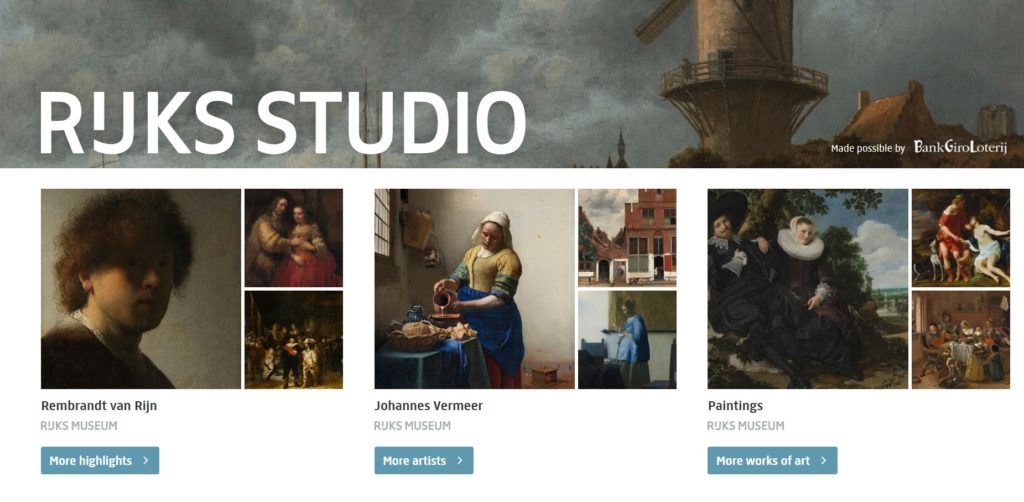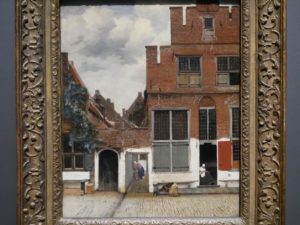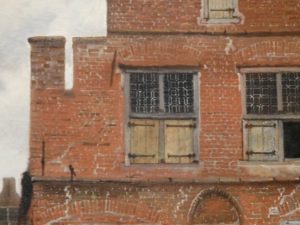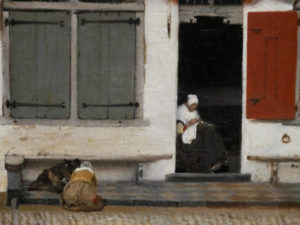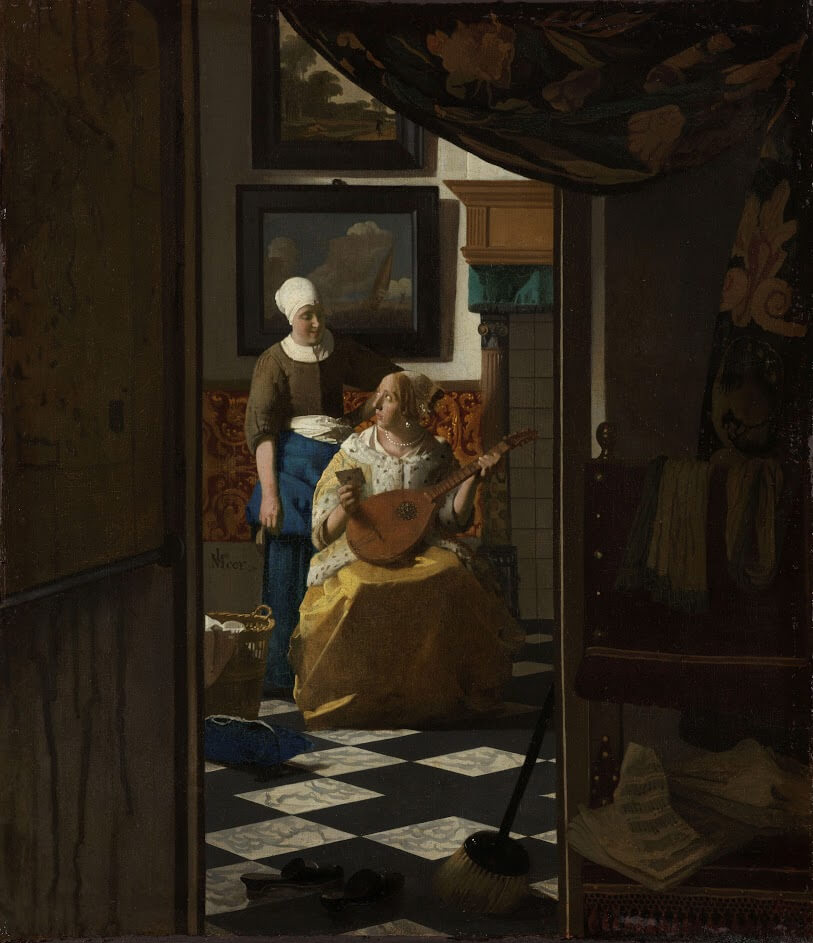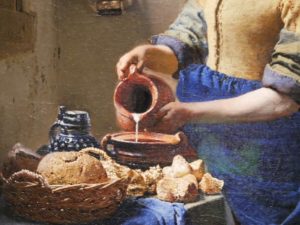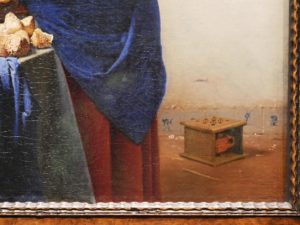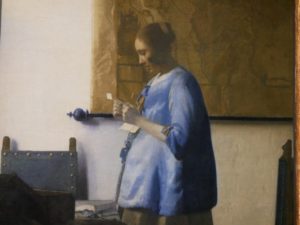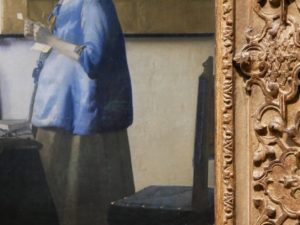Due to our forced home staycations, I decided to start a little project and take you to a different museum each day. We’ll start with a virtual museum visit to the Rijksmuseum and their collection of paintings created by Johannes Vermeer.
And, of course, since we should #stayhome, we’re going to do that virtually.
They say art is healing. So, let’s try to stress a bit less, and instead of watching the millionth news about COVID-19, enjoy in some art.
Johannes Vermeer at the Rijksmuseum
Today I’m taking you to one of my favourite museums in Amsterdam, the Rijksmuseum. I’ll tell you more about one of the most famous Dutch masters, Johannes Vermeer. And his paintings that are in the Rijksmuseum’s collection.
⤷ 10 things you didn’t know about Rijksmuseum
Watch my Rijksmuseum video here:
Rijksstudio: Rijksmuseum’s online collection
Just as a reminder, Rijksmuseum has almost its entire collection online. So, instead of browsing through the news and getting all stressed about the virus. Browse through the Rijksmuseum collection and enjoy in some beautiful paintings there.
If you like a specific collection or an artist, let me know, and we can virtually visit it in one of the following days.
Johannes Vermeer
Although it’s home to one of the most significant collections of Dutch Golden Age paintings, the Rijksmuseum has only four paintings created by Johannes Vermeer in its collection.
That’s actually not that surprising when you know that Vermeer wasn’t painting that much during his life. And we have only around 35 of his paintings preserved. He was also completely unknown until the mid-19th century.
Vermeer was born in 1632 and died in 1675, spending his life in Delft. Besides being a painter, he also worked as an art dealer. Perhaps, being busy with his other profession is the reason he wasn’t painting that much.
His focus on details and a slow way of painting definitely added to it.
However, he was probably also quite busy with taking care of his family – he had 15 children.
Johannes Vermeer was mostly painting interior domestic scenes. Although they are very peaceful and tranquil, he’s filling them with details. By them, he’s almost encouraging us to find some secret meanings and symbolism on his paintings.
Well, let’s take a look at his paintings in this virtual museum visit to Rijksmuseum and work of Vermeer there.
Vermeer’s paintings at the Rijksmuseum
1/ View of Houses in Delft
Click here for more details on View of Houses in Delft.
This is quite an unusual painting for Vermeer because he was usually painting interior scenes. However, he’s opening doors of these houses, so we can see what’s happening inside.
You can see here why it would take him so long to paint some of his paintings. Look at the bricks or windows. You can just imagine a tinny brush he used to paint them.
This painting is also very special because Vermeer is one of the first painters who was using camera obscura in his art. It was basically a dark box with mirrors inside of it. He would use the light then to reflect the image he wanted to paint, through the camera, on his canvas. Pretty cool, right?
2/ The Love Letter
Click here for more details on the Love Letter.
Vermeer painted the majority of his paintings in the same room of his house. That’s why the setting on the next three paintings is very similar. With light always coming from the left.
You can see a maid here who brought a letter to the lady of the house. This is telling us a lot about women living in the Netherlands during the 17th century – many of them could read!
However, whenever you see a lady reading a letter on one of those Dutch 17th-century paintings, that’s always a love letter. And usually it’s not from her husband. Look at the way a maid is looking to the lady in a yellow dress.
Does she know more than we do? What do you think from whom that letter is?
⤷ The best museums in Amsterdam
3/ The Milkmaid
Click here for more details on the Milkmaid.
This is one of the most famous Vermeer’s paintings. And you can see so well here how good with showing the light on his paintings Vermeer was.
Look at the window here. Can you see a small piece of glass missing? And the more intense light coming through it and reflecting on the wall behind the lady here.
However, Vermeer is also painting her face with the light and shadow only. You can also see that on her arm. Vermeer was definitely a master in using the light on his paintings.
The blue colour he used in this painting is also quite extraordinary. It’s the lapis lazuli pigment. One of the most expensive pigments in the world. Vermeer was the only painter in the Netherlands at that time who was using it on his paintings. We are actually still not sure how he was getting it.
4/ Woman Reading a Letter
Click here for more details on Woman Reading a Letter.
Similar to the previous paintings in the way of creating a composition and using the light, this painting is fascinating because you can see how even more important than the light to Vermeer was a shadow.
He was one of the first painters in art history who understood that a shadow is never only a grey area. But it always reflects the colour of the object next to it. Look at the shadow below the map – it’s a bit yellowish because it reflects the colour of the map. And compare it with the wall behind the lady and a chair – it’s a bit blue because it reflects the colour of the chair.
The way he was painting light and shadow on his paintings became so interesting to the painters in the second half of the 19th century – the Impressionists. And they made him famous because of it.
⤷ Read my 10 tips on how to feel like you’re travelling when you’re not
Hope you enjoyed our virtual museum visit to the Rijksmuseum and its collection of paintings created by Johannes Vermeer.
Which one is your favourite painting? Which museum would you like to visit with me next?

